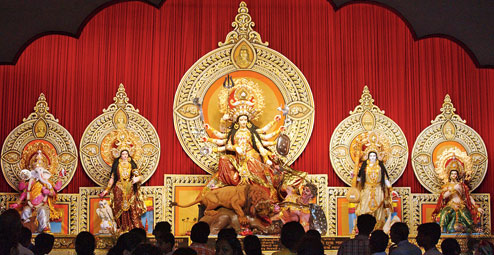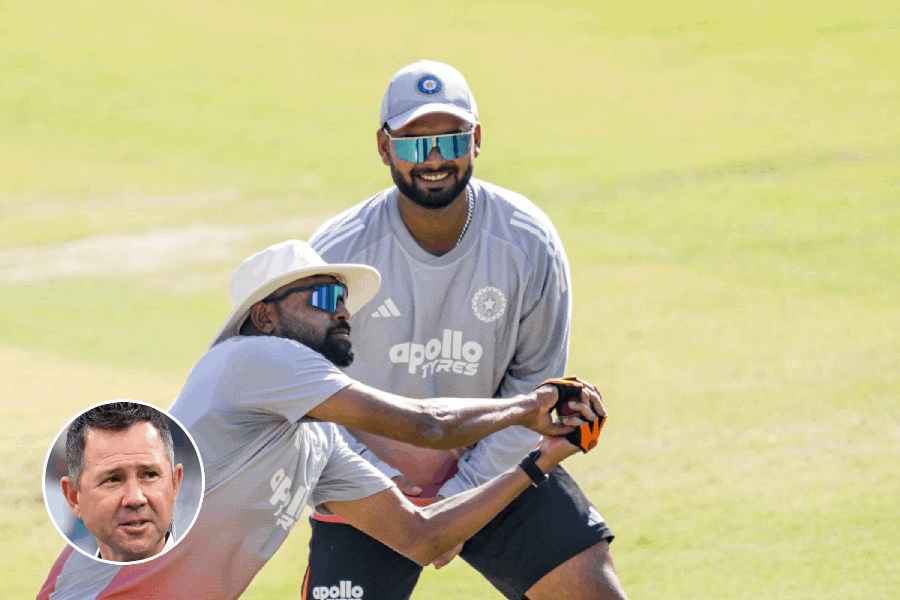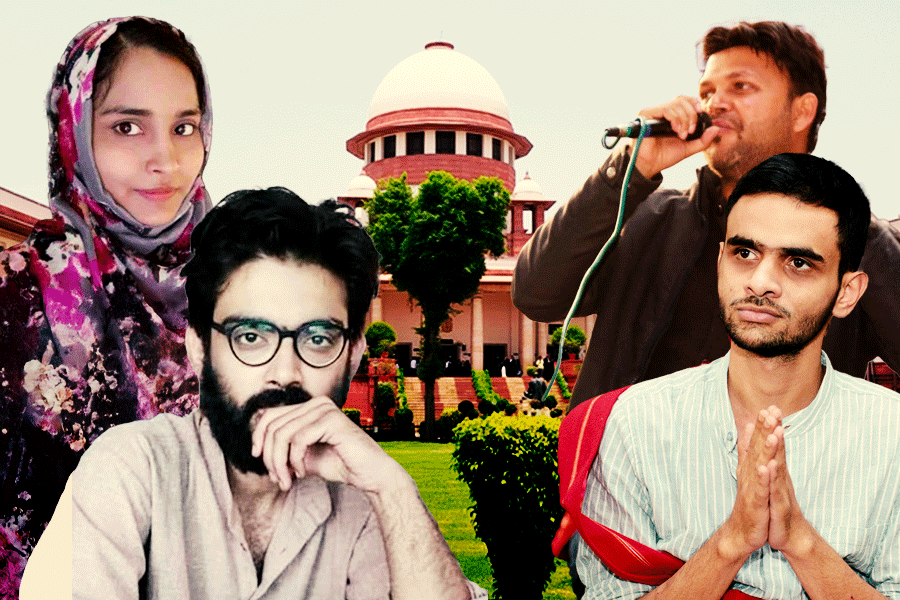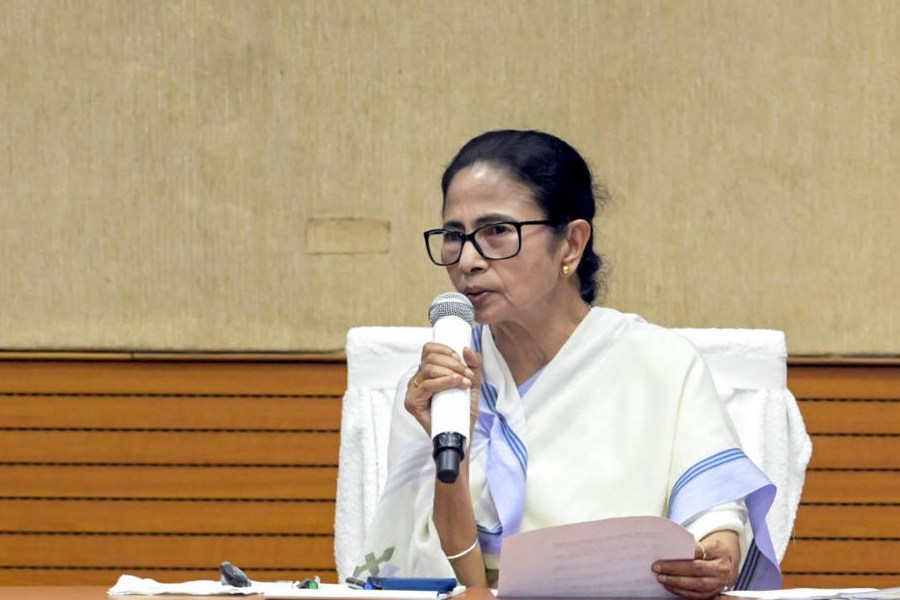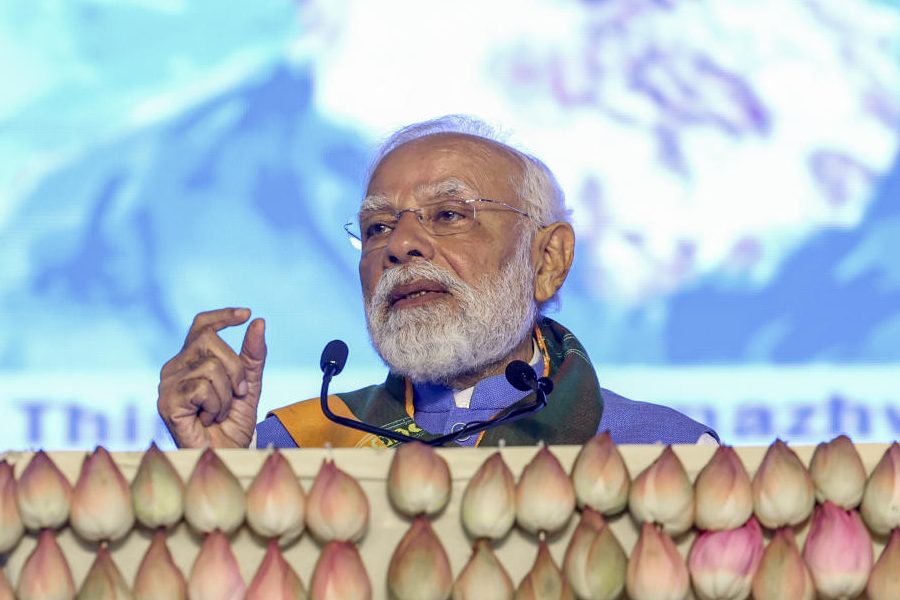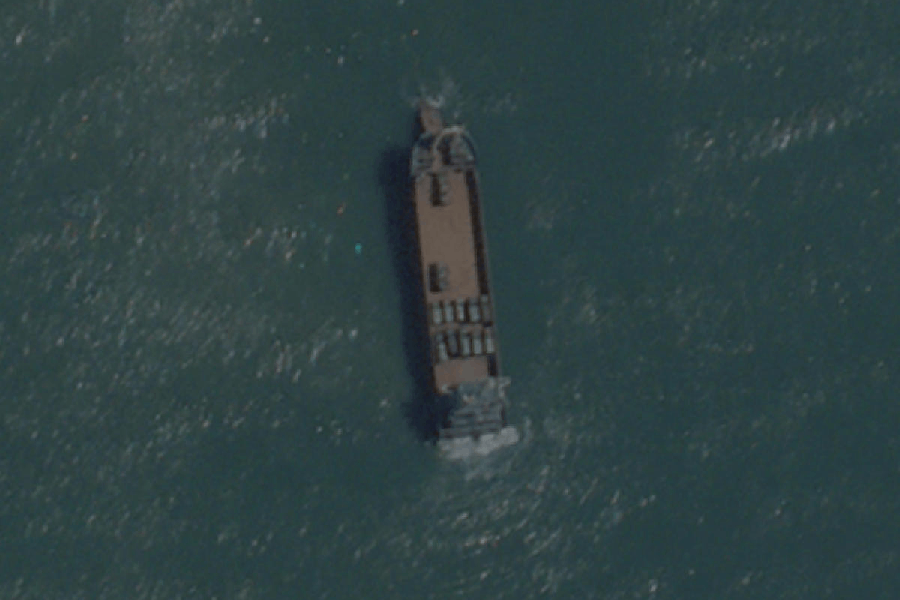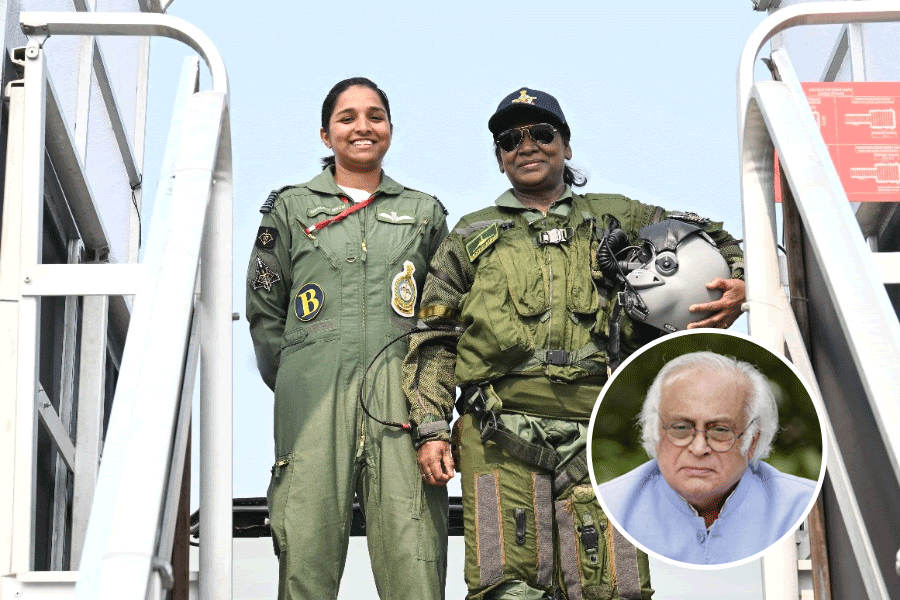I grew up in Ichhapore in West Bengal and attended the Barrackpore Central School. The Puja in Ichhapore was much smaller in size than the ones in Calcutta. As teenagers, we used to look forward to wearing the most fashionable clothes during the Puja days. I remember that once I wore only bell-bottoms. The trousers were a rage at that time because Amitabh Bachchan had made them popular in his films. We used to check out whose bell-bottom flares had the maximum spread or breadth at the bottom.
As a kid, clothes and food took centre stage. In fact, when we were young, we went from one pandal to another, mostly for the food stalls. During a spell when we were living in Calcutta, we used to hire an open tempo and go pandal-hopping across the city. There used to be 20 of us and we would spend the entire day checking out various pandals. I would love to do that even today but the traffic situation in Calcutta is such that one can't think of any such activity.
But like every Bengali, I too wait eagerly for Durga Puja every year. It is, to my mind, the biggest street festival in the world. People are on the road for four days. I have not missed a single Durga Puja in Calcutta for the last 15 years. Wherever I am in the world, I take a break to be in Calcutta.
The exuberance and fun of these few days can't be replicated anywhere else. Everything is so refreshing — the kind of things people do, their joyful mood, the buzz in the air, everything. From a two-year-old to a 90-year-old, everyone enjoys the Pujas with the same zeal.
Durga Puja is one of the festivals which encompass religion, spirituality, fun, food, friends and family. And it's also about art.
For the last so many years I have been looking at pandals very closely. The designing of some of the pandals is just perfect. Then, of course, the best artistes from all across the country come to design the idols of Durga and her family. These artistes are so talented and their eye for detail so deep that every year they better themselves. I enjoy watching the making of idols. For me, the festivities begin when I watch these idols take shape.
But though the artistic factor has now come to its finest stage, on a personal level there hasn't been any change in the Pujas since my childhood days. Everybody is happy, no one fights, and there is a festive spirit across all households.
Then there is the sound of dhaks. The Labony Puja in Salt Lake in Calcutta has around six to seven dhakis playing their drums every day. I can hear them beat the dhaks for hours and I am left in a trance. I also love the smell of the smoke that comes out of the dhunuchis. It is intoxicating, to say the least. And I make sure that I do not miss the anjali — the morning prayers. You don't have to be religious to be a part of the anjali. You are just drawn to it and it becomes part of your system.
Personally, nothing has changed for me. I still go pandal-hopping and I have to buy a few new sets of clothes for the festival every year. And how can any Bengali festival be devoid of good food? I eat out during the entire period of the Pujas. The best phuchkas are served during this season. The bhog served in all the pandals are the most delicious — you can never get khichdi as delicious as the ones served at the pandals. After the anjali, we head home, rest a bit and change our clothes only to head out in the evening again.
Besides the Pujas in Bengal, I've enjoyed the ones in Delhi, where my family lived for a while. I have very fond memories of the Delhi pujas. We used to stay in an air force station in Tughlaqabad and the puja in that area was a very small affair — it was a colony Puja with a minimal budget. As a result, I used to get to play the dhak and I even used to perform the aarti — the evening prayers. During visarjan, or the immersion of the idols, my friends and I used to lift the idols and carry them. It was all fun for me and the best period of my teenage years.
-

Shoojit Sircar
While in Delhi, we also visited the many pujas in the [predominantly Bengali] Chittaranjan Park area. Every pandal there outdid the adjacent one in grandeur. This area had — and perhaps still has — the best pujas outside of Calcutta. Thousands of people would stroll by in the evening and the neighbourhood looked nothing like Delhi!
The only thing that has changed in these years is the size of the pandals and the artistic finesse of the Durga idols. The rest remains the same. My enthusiasm as a 45-year-old is still the same as it was when I was a five-year-old or when I was 15-year-old teenager. But, yes, there is another change — now I visit the pandals with my children.
But I suppose, as with everything else, Durga Puja too has become a bit commercial. But you can't blame anyone for it. The Puja committees have become bigger, budgets have gone up and it is now an expensive affair. So people don't really mind the commercial element as money needs to be pumped in to organise such a grand festival. But I think it has also increased the enthusiasm of people as they get to see the works of the best of artistes.
Durga Puja is also the time when romance blossoms. Love is in the air during these few days. Many people call it the Bengali youngster's Valentine's Day. Boys and girls meet each other in pandals and are free to go wherever they wish to. Many of them move from one pandal to another. The girls can be out at night as it is safe during the Pujas because almost the whole of Calcutta is out on the streets. It is the best time to meet prospective partners. In fact, I met my girlfriend — and now wife, Jhuma — during one such Puja.
About two years ago, I moved my wife and children to Calcutta. It's now our home. In fact, my wife and I took this decision consciously to allow our kids to learn about our culture. They shouldn't lose out on the wonderful atmosphere that we grew up in. They need to learn and understand how our festivals play an important role in our lives. I want them to know what it means to be a Bengali.
There have been a few occasions when I've missed a few days of the Pujas because of work. When that happens, I get snappy. Once I couldn't be in Calcutta for the first two days of the Pujas because of a shooting assignment in Mumbai. I sulked throughout. I have missed important assignments because I've refused to shoot during the Puja days.
I am sure no Bengali can concentrate on work during Durga Puja. If we have to work, our minds would be wandering around the pandals. It's like a clock that has been tuned in such a way that you have to just enjoy yourselves for those four days and do no work. This year, there is a shoot with Amitabh Bachchan right after the visarjan. I have requested the organisers to reschedule the shoot as I wouldn't be in the right frame of mind to work well.
That's because the culmination of the Pujas with visarjan leaves us gloomy. I have seen people with tears in their eyes during the day of the immersion. That's a day when most of us get depressed. Every visarjan, I go to the Ganges in north Calcutta, sit there for hours and watch countless idols being immersed. I become emotional as I see Durga bidding us goodbye. And then the wait for the next year's Pujas begins.
(As told to Smitha Verma)

